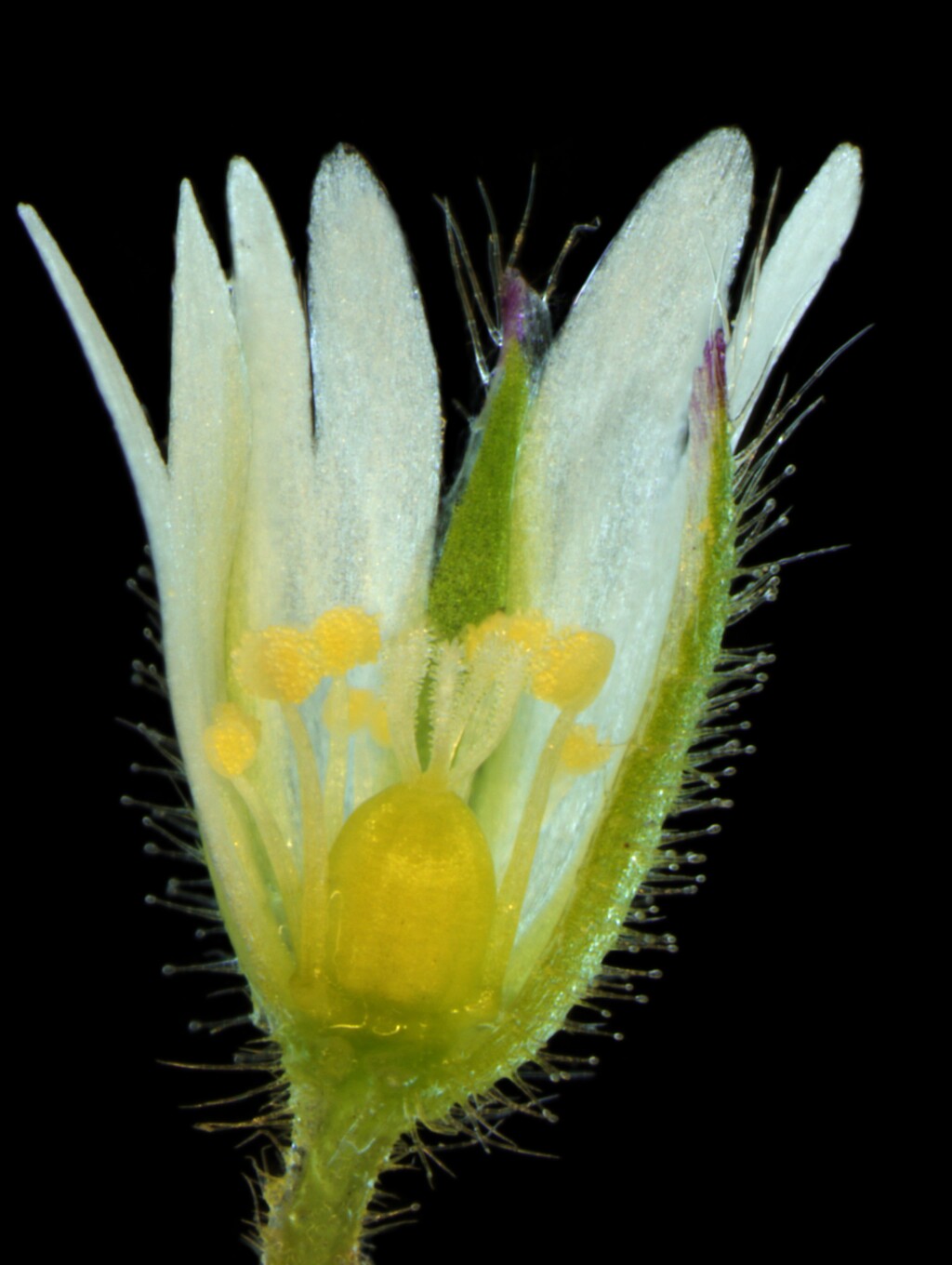Cerastium glomeratum
Thuill. Sticky Mouse-ear ChickweedAnnual with branched taproot; hairs glandular and eglandular. Stems slender, erect or decumbent, 5–45 cm long. Leaves sessile, obovate, elliptic or ovate, 5–25 mm long, 3–18 mm wide. Inflorescence fairly dense; bracts entirely herbaceous. Flowers 5-merous; pedicels much shorter than capsules; calyx glandular- or rarely eglandular-pilose, sepals lanceolate, 3–5 mm long, 1–1.5 mm wide, narrow-acute, margins narrowly scarious; petals more or less equalling sepals, one-quarter bifid, rarely absent; styles 5. Capsule curved, 6–10 mm long; seeds pale to chestnut-brown, finely elongate-tuberculate, 0.4–0.5 mm diam. Flowers Aug.–Jan.
LoM, MuM, Wim, GleP, Brid, VVP, VRiv, RobP, MuF, GipP, OtP, WaP, Gold, CVU, GGr, DunT, NIS, EGL, EGU, WPro, HSF, HNF, OtR, Strz, MonT, HFE, VAlp. Naturalised all States, Norfolk Is., Macquarie Is., cosmopolitan weed. Native to Europe. A weed of lawns, disturbed soils and waste places throughout Australia but common only in temperate areas.
Adams, L.G. (1996). Caryophyllaceae. In: Walsh, N.G.; Entwisle, T.J., Flora of Victoria Vol. 3, Dicotyledons Winteraceae to Myrtaceae, pp. 228–271. Inkata Press, Melbourne.
 Spinning
Spinning




